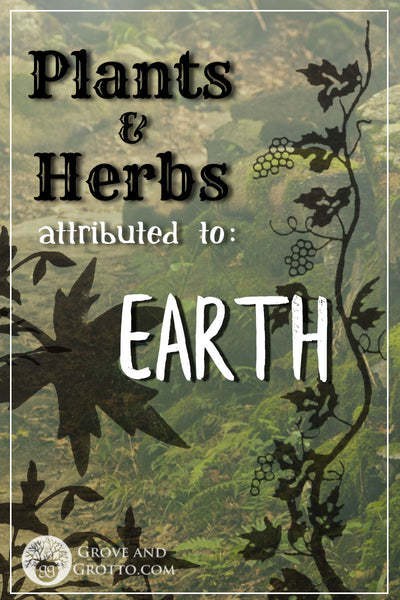
As we wrap up a four-part series on elemental correspondences, it's time to consider the herbs of Earth. You may notice that not as many plants are attributed to Earth as to Air, Fire, and Water. This is because herbal magick as a whole is ruled by Earth. In a sense, all herbs are Earth herbs.
However, there are times when your magick calls for the specific qualities of Earth: Darkness, solidity, quietness, rest and incubation. Earth herbs, in general, are good for evoking gratitude and for healing grievances. Earth is also the element of manifestation--using Earth herbs is one way to anchor a spell in the physical world.
Correspondences are always up for debate, and many plants have more than one elemental influence. Still, understanding them can help you choose the right herb for a particular working. Here are some common attributes of Earthy herbs and incenses:
Food plants.
Earth is the element of our bodies, the part of us that requires nourishment. Hence, most plants that we eat can be attributed to Earth. Grains (including corn and rice), squash, potatoes, nuts, and fruits fall into this category--though many fruits also belong to Water.
Smells of musk or soil (Patchouli, Vetiver, Oakmoss)
Woodsy, funky and grounding odors are definitely Earthy. (So are animal musks, stones, salt, and actual dirt!)
Grows near or under the ground. (Clover, Potatoes, Ivy, Fern)
Creeping, ground-covering and burrowing plants are also quite logically assigned to Earth.
Dry and stiff herbs. (Myrrh, Hawthorn, Wormwood)
The sturdiest of the elements, Earth governs plants (and parts of plants) that are brittle or hard.
Roots, stems, and seeds. (Oak, Licorice, Mandrake, Walnut)
As discussed earlier in the series, different parts of a plant can carry different elemental correspondences. But the parts that grow under the ground or require germination always belong to Earth.
Read about the herbal correspondences for Air, Fire, and Water, or check out the archive here.
